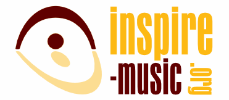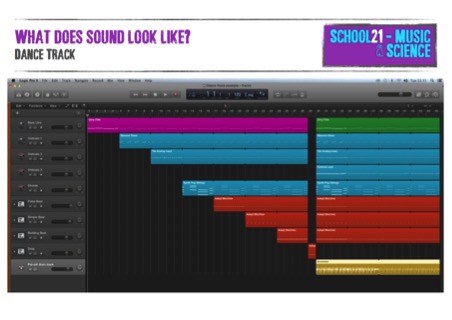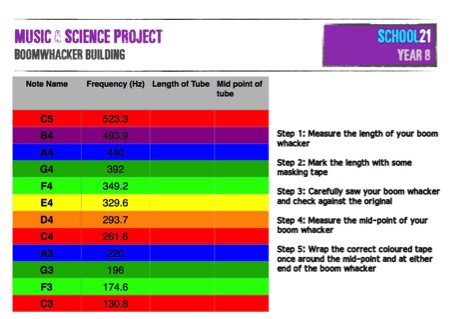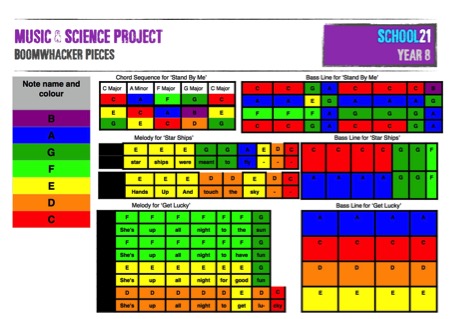A large scale project between music and science in KS3 exploring what music looks like.
Cymatics: A Project Based Learning Story
What are the goals of the work?

The aim of this project is to enable students to investigate the intersection between music and science, learning both musical and scientific skills. Students explore the science behind sound, carrying out experiments and generating scientific footage to show what music 'looks' like. The project was inspired by Nigel Stanford's Cymatics video “Science vs Music”.
What is the context of the work?
The project was developed at School21 in Stratford, London ( https://school21.org.uk ), where project based learning (PBL) is an important underpinning principle. Ofsted (2014) rated the school as 'outstanding' and commented that 'A well-researched, innovative and creative way of organising subjects promotes outstanding learning.' Benefitting from relatively small school Year group sizes of just 75, projects in music have led to an array of authentic end-products where every student is accountable.
PBL broadly exists in any dynamic music classroom, but engaging with it more closely and rigorously has, for me, unlocked music education in my classroom and beyond, in ways I could not have foreseen. PBL at School21 generally follows the model of REAL projects; Rigorous, Engaging, Authentic, and Learning based. This can be investigated more deeply here. 'Projects' (300 minutes cross-curricular endeavours) are a timetabled aspect of the curriculum for all KS3 students, but they have also been integrated into discrete disciplines such as maths, English and music.
At School21, students experience 100 minutes of music each week throughout Key Stage 3 (KS3). In addition, they have 300 minutes each week dedicated to a cross-curricular project during at least one of their KS3 years, although this is not the only time that projects take place.
Perhaps the time weighting valued here is not something every school is willing to replicate, but it is also during more restricted time frames that PBL has informed my practice.
This question 'What does sound look like?' drove this large-scale Year 8 project that combines music and science, occupying threex100 minute blocks of curriculum time per week over the course of a twelve-week term. The project was led by music teacher Emily Crowhurst and science teacher Heather Birtwistle and carefully planned in advance. Curriculum content from both subjects, skill development goals, authenticity in terms of outcomes and audience, meaningful product generation and the scope for student choice were all considered within the planning process and critiqued by staff at incremental points at least one term before enactment. A timeline of important deadlines, including critique points ,was shared with the students from the outset, and time and group sizes were divided flexibly according to methods of working most appropriate at any given point. These included whole group workshops, small group ensemble and lab work, and independent study in a number of capacities.
What is the content of the work?
The project culminated in an end of term exhibition of the products created. One such product was a cymatics video, developed in trios in response to Nigel Stanford's 'Cymatics video', the project's initial hook. The videos synchronised dance tracks composed by the students using LogicProX, with scientific footage captured live on phones, in order to represent both visually and artistically the science at work within their music. Footage included vibrating liquids on exposed speakers, slow motion captures of cymbal and tuning fork vibrations, shadow puppetry and light ray box footage. In addition, students measured, carved and labelled their own Boom Whackers (tuned percussion tubes), using science and maths to work out the length that each tube would need to be in order to achieve the desired frequency—perceived as pitch. The tubes were used to generate chords and melodies for a large-scale, four-chord mash up performance, which also integrated a 'makey-makey' device. This piece of kit enables a variety of objects (in this case, buckets of water) to be converted into pitch making devices that are triggered by touch and could be used in a number of innovative and creative ways.

Many of the music skills (performance, composition, use of technology) acquired through this project can be inferred, but it may be useful to view the composition of the dance tracks used in the cymatics videos in greater depth. The decision to compose a dance track was based on the stylistic traits of this music: the strong sense of pulse, the gradual layering of ideas, and the use of repetitive and often simple motifs that can be compartmentalised when generating the visual footage. Students were given a structural guide and some instructions to help them negotiate the software and work independently. Starting with the bass line, the lynch pin for the work, students built additional layers using different timbres, working both by ear, and from a collection of suggested notes that would complement each other. Through the additional layering of drumbeats and some changes of texture, rather rapidly, stylistic pieces emerged, each roughly two minutes in length. Paired working, whole class and teacher critique pushed compositions on further, and with the success of the overall product reliant on quality here, all students rose to the challenge (see illustrative example project materials).
illustrative example project materials
What are the key features of the teaching and learning approach?
Project Based Learning (PBL) is at the heart of this case study, with a collaboration between departments (Music and Science). Extensive planning went into the project, with both the Head of Science and Head of Music leading the learning. In such Project Based Learning, there is a culture of redrafting, and practice (its music equivalent), and of considering the value of outcomes or products for an intended audience; this serves as a strong motivating force for students. Students are set regular goals throughout the project with the incentive of a performance at the end.
How is the work being reviewed?
Besides the rigorous ensemble rehearsals for the performance, the continual critique of the compositions and the development of video editing skills, students gain knowledge of the science, including how the ear works, and the science behind frequency (related to perceived pitch) and amplitude. They get this knowledge from an expert source, the science teacher, but show their knowledge, not only through tests, but expressively and artistically, as facilitated by the music teacher. This enhances the experience and learning on both sides. Furthermore, there is an even deeper form of education at work, transcending the skill and knowledge acquisition from both subjects. Students here are problem solving, managing their time and generating real and relevant artistic outcomes. They are made accountable at every step; their success is reflected not only in their end products, but in their learning journey throughout the project.
What are the positive outcomes for children/young people – are they some or all of musical, social, personal, educational - how and when can they be identified?
All pupils are observed to engage in this project and play a role in creating and performing the final work. There is a collaborative aspect, both in terms of working across departments and together as a group, to create music videos and a final performance. Musical outcomes include compositions, listening activities, performances and an understanding of Cymatics, with a strong link to acoustics and the physical properties of sound.
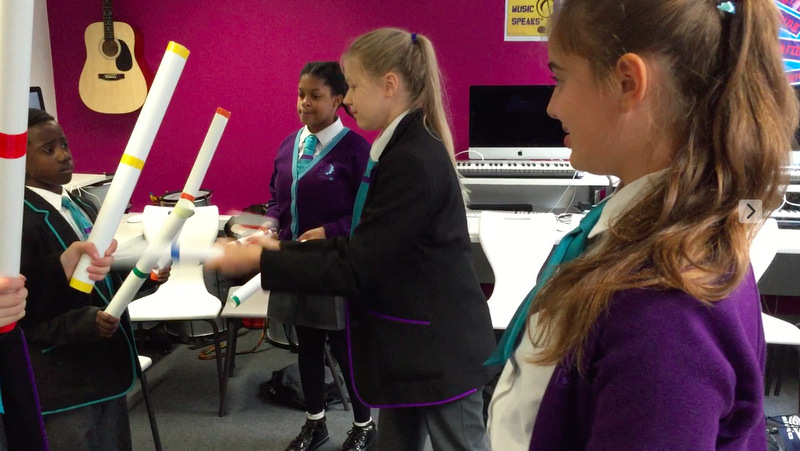
What are the key features of teacher/leader behaviour that are enabling those positive outcomes?
Passionate, energetic teaching staff are key, who fully believe in the PBL approach and who share their different fields of expertise. The joint planning sessions give the work a real purpose, with authentic outcomes and the careful mapping of skills across science and music providing an appropriate structure.
What are the key features of context, content and activities that are enabling those positive outcomes?
It is important to link the project work to the skills that students need in order to access the curriculum in KS3 and later on in KS4. The learning is active and creative, seeking to empower students to take learning beyond the classroom and to apply their understanding of science and music in a way that also excites them. A range of activities is used to engage all students, so those who may be relatively less developed in one aspect will have the chance to excel in another.
What other factors in this case are contributing to those positive outcomes?

Class sizes are small and large amounts of time are given to the projects.
How replicable or adaptable is it?
The project can be undertaken with as much or as little equipment as needed. The strong link between departments played a vital role in setting up the project and allowed for a range of expertise to be accessed across both subjects. Equipment included keyboards, percussion instruments, PVC pipes to create instruments, Makey-Makey's, exposed speakers and a range of science equipment, including Bunsen burners (which are optional). Recording equipment and editing facilities were also used when students created their own dance tracks and videos. Although the amount of time allocated and class sizes are not the norm across the sector, the nature of the project would still be replicable in schools. The number of outcomes could be changed to meet the realistic contact time that a teacher has with their students.
